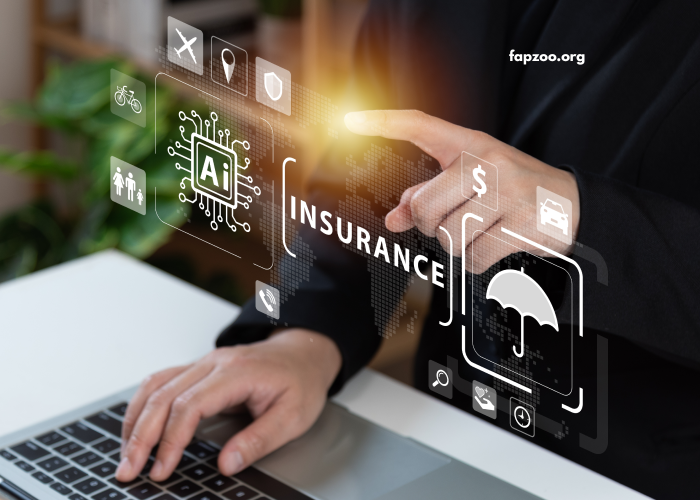The impact of technology on our daily lives and work environments is undeniable. From the way we communicate to how we conduct business, technology has revolutionized almost every aspect of human existence. As the world continues to evolve, the advancement of technology plays a central role in reshaping both personal lifestyles and professional landscapes. In this article, we will explore the significant ways technology is transforming the way we work and live, discussing the benefits, challenges, and future prospects of these innovations.
The Influence of Technology on Our Work Life
The Rise of Remote Work and Telecommuting
One of the most notable changes technology has brought to the workplace is the rise of remote work. Once considered a luxury or exception, working from home has become a standard practice for many organizations worldwide. High-speed internet, cloud-based collaboration tools, and communication platforms like Zoom and Microsoft Teams have made it easier than ever to stay connected with colleagues, clients, and customers, regardless of physical distance.
Remote work allows employees to work from anywhere, offering greater flexibility in terms of location and time management. This flexibility not only improves employee satisfaction but also reduces costs associated with commuting, office space, and utilities for businesses.
Automation and Artificial Intelligence
Technology has made it possible for businesses to automate repetitive tasks that once required human labor. Automation and artificial intelligence (AI) have entered virtually every industry, from manufacturing and logistics to healthcare and finance. With AI-powered systems and machines performing routine tasks, employees can now focus on more complex and creative work that requires human judgment and problem-solving skills.
In the workplace, automation has led to increased productivity and efficiency. For instance, chatbots are being used in customer service to handle basic inquiries, while AI-driven software can analyze data and provide insights that help businesses make more informed decisions.
While automation can enhance performance, it also raises concerns about job displacement. As machines take over mundane tasks, certain roles may become redundant, prompting the need for workers to reskill and adapt to new technologies.
Collaborative Tools and Cloud Computing
Cloud computing has revolutionized how businesses store, access, and share data. With cloud-based storage systems, businesses no longer need to maintain expensive on-premise servers. Instead, they can rely on cloud services that offer secure, scalable, and cost-effective data storage solutions.
Moreover, cloud-based collaboration tools like Google Workspace, Microsoft 365, and Slack have made team communication more efficient. These platforms allow employees to work together in real-time, regardless of their physical locations, thus enhancing collaboration and productivity.
The shift to cloud computing also offers enhanced data security and disaster recovery options, as cloud providers often implement robust security measures to protect against data breaches and cyber threats.
Virtual and Augmented Reality in the Workplace
Virtual reality (VR) and augmented reality (AR) are emerging technologies that have begun to make their way into professional settings. VR allows users to immerse themselves in a simulated environment, while AR overlays digital information onto the real world. In the workplace, these technologies have opened up new possibilities for training, design, and collaboration.
For instance, VR is being used for training purposes in industries like healthcare, manufacturing, and aviation. Medical students can practice surgeries in a virtual environment, while engineers can simulate the operation of complex machinery without physical risks. Similarly, AR is being used in retail to enhance the shopping experience, allowing customers to visualize products in their own homes before making a purchase.
These technologies have the potential to increase productivity, reduce errors, and enhance innovation across various sectors.
The Impact of Technology on Our Personal Lives
The Digital Transformation of Social Interactions
Social media platforms like Facebook, Instagram, Twitter, and TikTok have radically changed the way we communicate and interact with one another. The digital age has brought people from different corners of the world closer, allowing us to stay connected with friends and family no matter the distance.
However, while social media has enhanced connectivity, it has also led to concerns about the quality of interactions. Some argue that online communication lacks the depth and authenticity of face-to-face conversations, leading to feelings of isolation despite being “connected” online. Furthermore, the constant flow of information on social media can contribute to stress, anxiety, and digital overload.
E-Commerce and the Evolution of Shopping
The advent of e-commerce has revolutionized how we shop. Platforms like Amazon, eBay, and Etsy have made it easier for consumers to buy products from the comfort of their homes, often with just a few clicks. In addition to convenience, e-commerce offers consumers a wider range of products and the ability to compare prices across different retailers.
The COVID-19 pandemic accelerated the shift to online shopping, with even traditional brick-and-mortar stores pivoting to e-commerce models. Many companies have also embraced AI to personalize shopping experiences, offering product recommendations based on past purchases and browsing behavior.
The growth of online shopping has, however, posed challenges for traditional retailers, forcing them to rethink their business models and invest in digital technologies to stay competitive.
Health and Wellness Technologies
Advancements in technology have also transformed the health and wellness industry. Wearable devices like Fitbit, Apple Watch, and Garmin have made it easier for individuals to track their physical activity, monitor their heart rate, and set health-related goals. These devices collect real-time data that can be analyzed to provide insights into personal health, encouraging users to lead healthier lifestyles.
Additionally, telemedicine and health apps have made healthcare more accessible, especially in remote areas. Virtual consultations with doctors, mental health professionals, and fitness trainers have become commonplace, reducing the need for in-person visits and enabling individuals to receive care from the comfort of their homes.
Smart Homes and the Internet of Things (IoT)
The rise of the Internet of Things (IoT) has paved the way for the development of smart homes, where everyday devices are connected to the internet and can be controlled remotely. Smart thermostats, lighting systems, refrigerators, and security cameras are just a few examples of IoT devices that make daily life more convenient and efficient.
Smart homes not only provide convenience but also contribute to energy savings and sustainability. For example, smart thermostats can adjust the temperature based on occupancy patterns, helping homeowners reduce their energy consumption. Similarly, IoT-enabled appliances can notify users when maintenance is needed or when supplies are running low.
The Challenges of Technological Advancements
Digital Divide
While technology has brought about significant benefits, it has also highlighted the digital divide— the gap between those who have access to modern technology and those who do not. People in low-income areas or developing countries may struggle to access the internet, affordable devices, or digital literacy training, limiting their ability to fully participate in the digital economy.
Governments, businesses, and non-profit organizations must work together to address this gap, ensuring that everyone has access to the tools and knowledge needed to thrive in a technology-driven world.
Privacy and Cybersecurity Concerns
As technology continues to permeate every aspect of our lives, privacy and cybersecurity concerns have become more pressing. From personal data being collected by online platforms to the rise of cyberattacks on businesses and governments, the need for robust data protection measures has never been more critical.
Consumers and organizations alike must be vigilant in safeguarding sensitive information and staying informed about best practices for cybersecurity. The rise of AI and automation also presents new challenges for securing digital systems, requiring ongoing innovation in cybersecurity solutions.
Ethical Considerations
As technology evolves, so too do the ethical dilemmas associated with its use. For example, the rise of AI has raised questions about its potential to replace human workers and its impact on job markets. Furthermore, the use of AI in surveillance, decision-making, and healthcare poses ethical challenges related to bias, fairness, and accountability.
It is essential for policymakers, tech companies, and society as a whole to engage in conversations about the ethical implications of new technologies and develop guidelines and regulations that ensure they are used responsibly.
The Future of Work and Life in the Age of Technology
The Evolution of Workplaces
As technology continues to advance, the workplace of the future will likely be characterized by greater flexibility, increased automation, and a higher degree of collaboration across borders. Remote work and hybrid work models are expected to remain prevalent, with employees working from multiple locations and using digital tools to collaborate seamlessly.
The integration of AI, machine learning, and robotics will further transform industries, creating new opportunities for innovation while also requiring workers to adapt to new roles and skills. Continuous learning and upskilling will be essential for staying competitive in an increasingly automated world.
Technological Innovations on the Horizon
Looking ahead, emerging technologies like quantum computing, 5G, and blockchain have the potential to bring even more dramatic changes to our work and personal lives. Quantum computing promises to solve complex problems at unprecedented speeds, opening up new possibilities in fields like medicine, finance, and logistics. The rollout of 5G networks will enable faster and more reliable internet connections, fostering innovations in autonomous vehicles, smart cities, and the IoT.
Blockchain, known for its secure and transparent nature, could revolutionize industries like banking, supply chain management, and healthcare by improving data integrity and reducing fraud.
Conclusion
Technology is transforming every facet of our lives, from how we work and communicate to how we live and manage our health. While there are undeniable benefits to these advancements, it is important to acknowledge the challenges that come with them, including issues of access, privacy, and ethics. As we look to the future, it is clear that technology will continue to play a central role in shaping our world, making it crucial for individuals, businesses, and governments to stay informed and adapt to the ever-changing technological landscape.
Ultimately, the way we work and live will continue to evolve, and our ability to harness the power of technology responsibly and creatively will determine the future of society as a whole.



